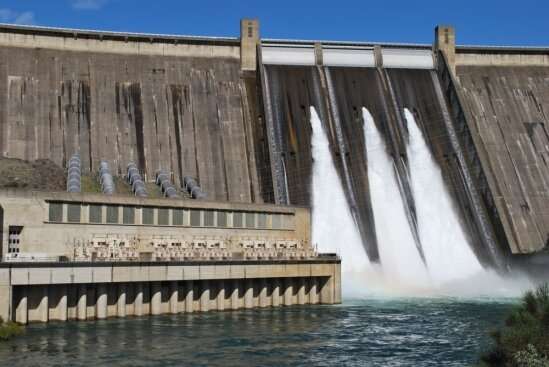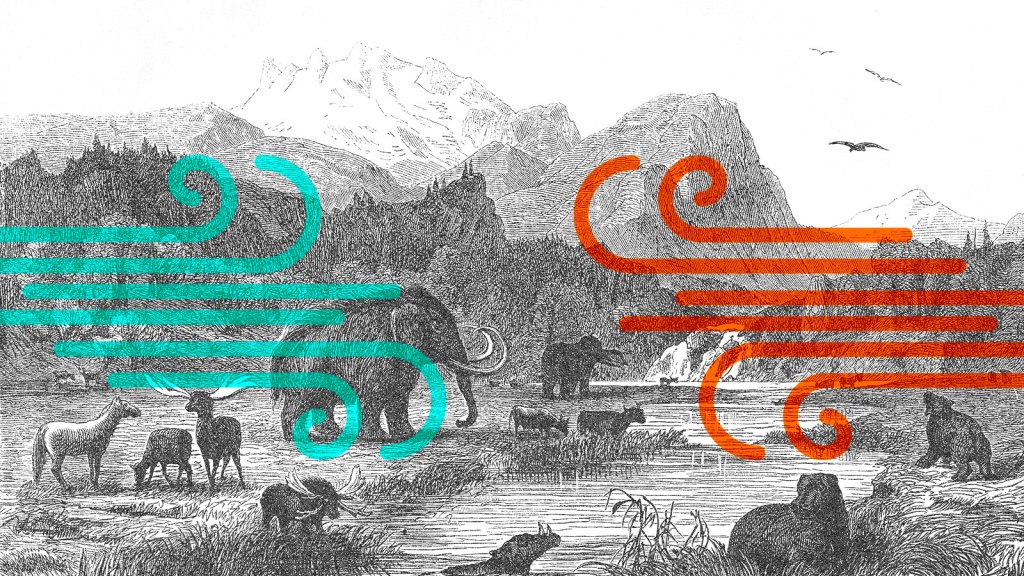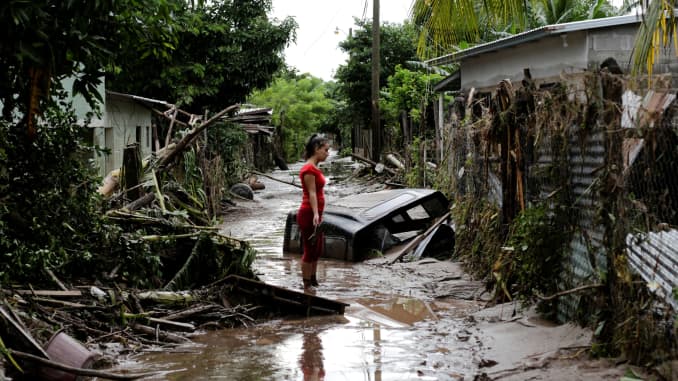by Harrison Tasoff, University of California - Santa Barbara

As the planet continues to warm, the twin challenges of diminishing water supply and growing energy demand will intensify. But water and energy are inextricably linked. For instance, nearly a fifth of California's energy goes toward water-related activities, while more than a tenth of the state's electricity comes from hydropower. As society tries to adapt to one challenge, it needs to ensure it doesn't worsen the other.
To this end, researchers from UC Santa Barbara, Lawrence Berkeley National Laboratory and UC Berkeley have developed a framework to evaluate how different climate adaptations may impact this water-energy nexus. Their research appears in the open access journal Environmental Research Letters.
"Electricity and water systems are linked in many different ways," said coauthor Ranjit Deshmukh, an assistant professor in the environmental studies department. "Climate change is expected to stress these links so we presented a framework that maps these interdependencies and will enable us to understand and quantify its impacts on the energy-water nexus."
Although it's not the first study to look at these topics, it takes a more nuanced approach than the papers that have come before. "There have been many analyses on how climate change could affect the water and energy sectors separately, but those studies were not typically looking at interactions and feedbacks between the two," said lead author Julia Szinai of Berkeley Lab's Climate and Ecosystem Sciences Division. "Our paper develops a generalized framework that identifies how climate change affects these coupled water and electricity systems and potential adaptations to future gaps in supply and demand. By doing so we illustrate often overlooked tradeoffs and synergies in adapting to climate change."
The framework uses systems analysis to identify the biggest potential climate stressors on the water and energy sectors. It quantifies actions that will be needed to adapt to climate change, and examines the feedbacks that would result from these actions.
"For example, our framework shows how increased temperatures due to climate change will likely increase electricity demand for air conditioning and water demand for irrigation," Deshmukh explained. "Whereas snowpack loss in the Sierras and variable precipitation will affect the water supply, not just for urban and agricultural use, but also for hydropower generation and thermal power plant cooling."
California relies on snowpack in the Sierra Nevadas to slowly mete out water over the course of the year.
The team applied the framework they developed to California, which relies on the snowpack for a good deal of its water and expends significant amounts of energy to transport water from the north to the southern part of the state. They examined multiple adaptation strategies in the water sector and found that some are energy intensive while others can actually save both water and energy.
The researchers integrated data across a number of fragmented studies to estimate the overall range of possible water and energy futures for the state under various climate scenarios at the end of the century. Their analysis found that two factors will likely dominate climate change's direct impacts on California's electricity sector: higher air conditioning loads and decreased hydropower availability.
 The climate crisis has severely impacted California’s water-energy nexus. Here we see the contrast between a full reservoir behind Folsom Dam in July 2011 compared to the water level under the extreme drought in January 2014. Credit: United States Bureau Of Reclamation
The climate crisis has severely impacted California’s water-energy nexus. Here we see the contrast between a full reservoir behind Folsom Dam in July 2011 compared to the water level under the extreme drought in January 2014. Credit: United States Bureau Of Reclamation"One of the most important points of the paper is that adapting our water system to climate change can either significantly exacerbate electricity grid stress, or on the flip side, it could help to alleviate it," said co-author and Berkeley Lab climate scientist Andrew Jones. "If we focus on adapting the water system by using big transfers of water across basins, or by using energy-intensive desalination, that's just going to make the electricity problem much more difficult. If, on the other hand, we adapt the water system by conserving water, it's actually a win-win situation because you're also reducing the energy required for water."
Currently, a staggering 19% of California's electricity consumption goes toward water-related applications, such as treating, transporting, pumping and heating. Additionally, about 15% of in-state electricity generation comes from hydropower.
The state has already seen some impacts of climate change on its water-energy systems. Extended droughts exacerbated by climate change have led to spikes in electricity consumption for groundwater pumping, and corresponding hydropower deficits have required replacement by dirtier fossil fuels.
The team is certain that the climate crisis will have a huge impact on the state's future water supplies. That said, the effect is wildly uncertain. In the worst case, available water supplies could decrease 25%; however, they could increase 46%.
"There are significant uncertainties in the climate model projections for precipitation," said Deshmukh. "But irrespective of those uncertainties, the adaptation measures offer significant co-benefits." Conserving water would save energy as well as money for consumers, and allow for greater flow in the state's natural streams and rivers.
When the team applied their framework to the worst-case scenario, they found that choosing the most energy-intensive adaptation strategies in the water sector could result in an energy imbalance as large as that caused directly by climate change.
"I think this is the first study to show that water sector adaptation can have as large of an impact on the electricity sector as the direct effect of climate change itself," said Jones.
"This study has highlighted the benefit of coordinated adaptation planning between the two sectors," added lead author Szinai, "so we're now linking a more detailed water resources management model and an electricity planning model that can demonstrate resilient pathways for building out electricity infrastructure in the Western U.S. when climate change impacts are included from the water sector."
Deshmukh is currently leading a team to explore the connections between energy, water and the climate by quantifying the impacts of climate change on hydropower dams and thermal power plants in 12 countries across southern Africa. He hopes to identify optimal investments in electricity infrastructure.
"California has a choice in how it wants to adapt its water sector to the impacts of climate change," Deshmukh stated. "The state can either pursue energy intensive climate adaptation measures such as desalination or develop a portfolio of measures that maximize water conservation potential. Planners and policymakers in the water and energy sectors need to coordinate their actions and plans for adapting to climate change."
Explore further
More information: Julia K Szinai et al. Evaluating cross-sectoral impacts of climate change and adaptations on the energy-water nexus: a framework and California case study, Environmental Research Letters (2020). DOI: 10.1088/1748-9326/abc378
Journal information: Environmental Research Letters
Provided by University of California - Santa Barbara








